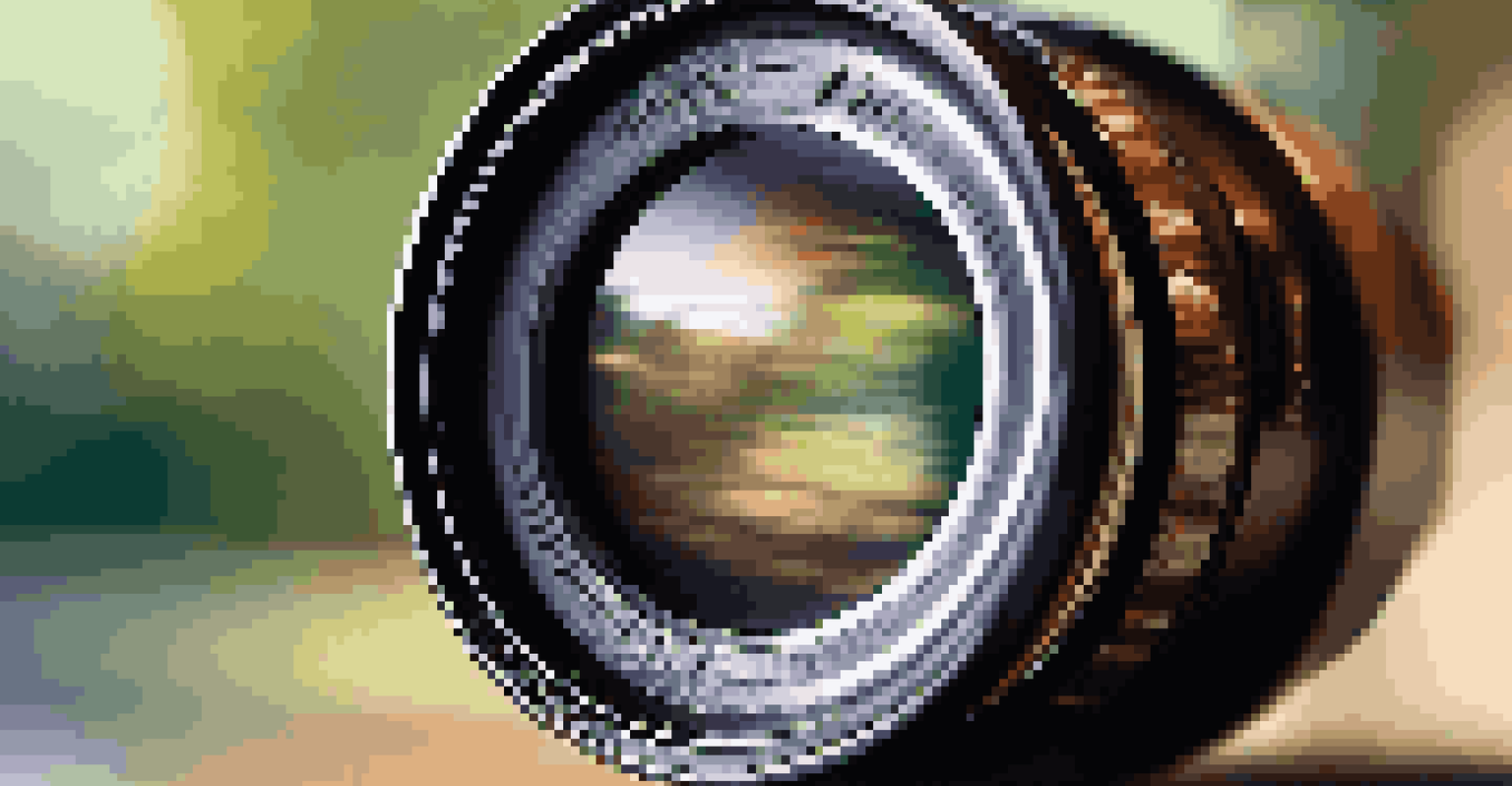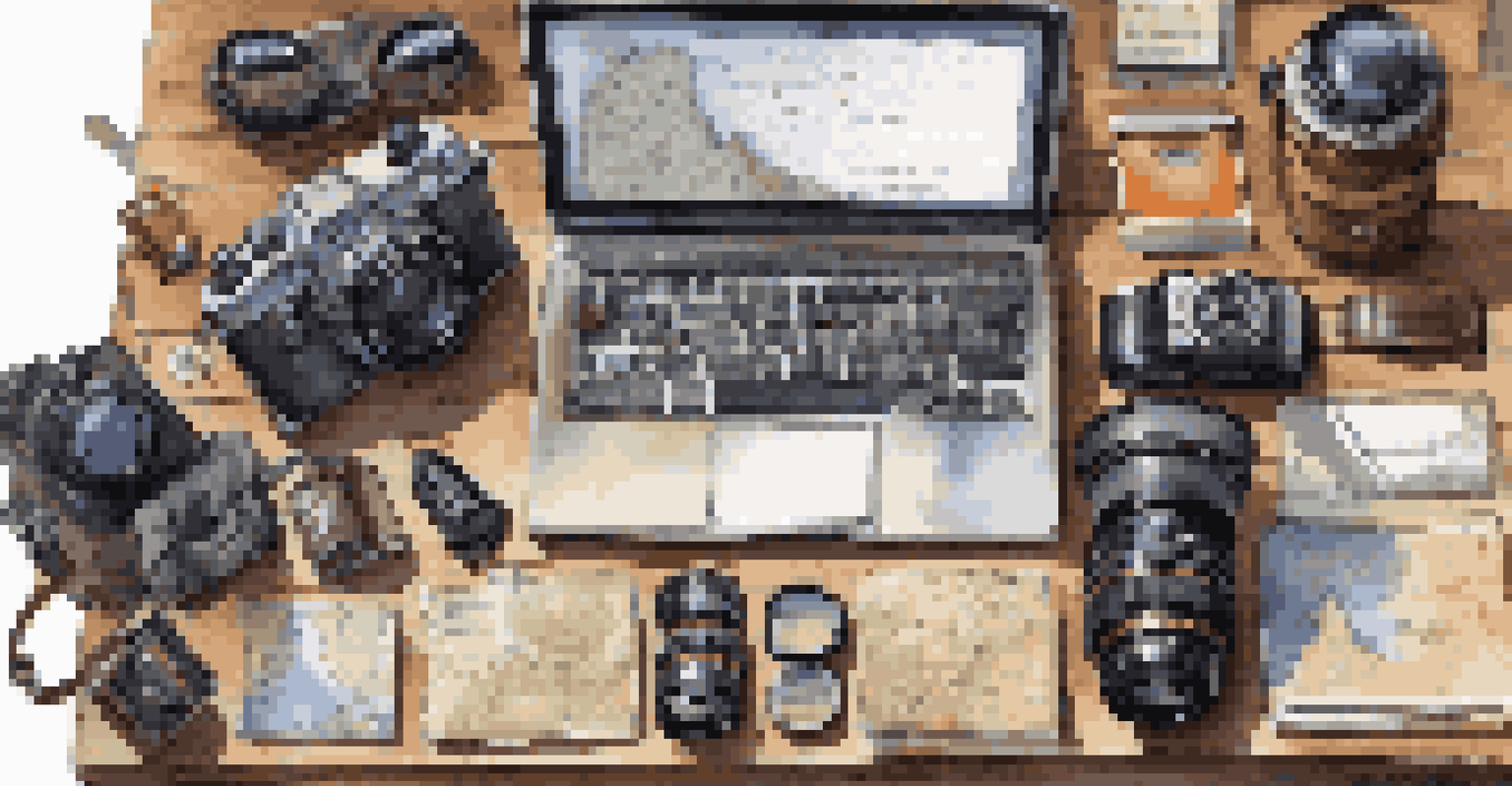How to Keep Your Camera Safe While Traveling

Invest in a Quality Camera Bag for Protection
A sturdy camera bag is your first line of defense against accidents. Look for one with padded compartments that snugly fit your gear, as this helps absorb shocks and prevent damage during transport. Ideally, your bag should be water-resistant to protect against unexpected weather changes.
A camera is a save button for the mind's eye.
When choosing a bag, consider the style that best suits your travel habits. A backpack might be ideal for long hikes, while a messenger bag could be more convenient for city exploration. Ultimately, the right camera bag should feel comfortable and secure, making it easier for you to focus on capturing those perfect shots.
Remember to keep your camera bag close to you at all times. Whether you're boarding a train or enjoying a café, having your bag within arm's reach minimizes the risk of theft or accidental damage.
Use Lens Caps and Filters to Prevent Damage
Protecting your camera lens is crucial, and using lens caps when your camera is not in use is a simple yet effective strategy. These caps act as a barrier against dust, scratches, and accidental smudges that could ruin your photos. It's a small habit that can save you from costly repairs or replacements.

In addition to lens caps, consider using UV filters. These filters can protect your lens from scratches and can be easily replaced if damaged, saving your actual lens from potential harm. Think of it like wearing a screen protector on your phone; it’s a small investment for peace of mind.
Protect Your Gear with a Quality Bag
Investing in a sturdy, padded, and water-resistant camera bag is essential for safeguarding your equipment during travel.
When you're out in the field taking photos, always be mindful of how you handle your camera. Be careful to avoid placing it on rough surfaces or exposing it to harsh conditions that could compromise your lens’s integrity.
Be Mindful of Weather Conditions
Weather can be unpredictable, especially when traveling, so it's essential to be prepared. If you're heading to an area known for rain or humidity, consider investing in a weather-sealed camera or protective covers. This can prevent moisture from seeping into your equipment and causing serious issues.
The best camera is the one that's with you.
On sunny days, don't forget to use a lens hood. This accessory not only helps reduce glare but also offers an extra layer of protection from accidental bumps or drops. Imagine it as a little shield for your lens; every bit of protection helps.
When in doubt, always err on the side of caution. If the weather conditions are unfavorable for your camera, it might be best to store it away until the storm passes. Your equipment will thank you for it!
Keep Your Camera Secure at All Times
Security is a top priority when traveling with your camera. Always be aware of your surroundings, especially in crowded areas where pickpockets may lurk. Keep your camera bag zipped and close to your body, and consider wearing it crossbody for added security.
When you're not actively using your camera, make sure it's stored safely. Avoid leaving it unattended on tables or in the backseat of your car. Instead, opt for a secure location, like a locked hotel room or a safe, to minimize the risk of theft.
Use Insurance for Peace of Mind
Camera insurance can protect against theft and damage, ensuring your investment is secure while you capture memories.
Lastly, trust your instincts. If a location feels sketchy, it’s better to be safe than sorry. Being vigilant can help you avoid potential mishaps and allow you to enjoy your travels worry-free.
Consider Insurance for Your Camera Gear
Insurance might not be the most exciting topic, but it's essential for protecting your investment. Many travel insurance policies offer coverage for lost or stolen camera equipment, providing peace of mind as you explore. Before you leave, check your existing policy or consider a specialized camera insurance plan.
In addition to theft, camera insurance can also cover damage from accidents, such as drops or spills. Think of it as a safety net; while you hope to never use it, having that protection can save you a significant amount of money should something go wrong.
Be sure to document your gear before traveling by taking photos and keeping receipts. This will help streamline any claims process if you need to file one after an incident. A little preparation can go a long way in protecting your valuable equipment.
Backup Your Photos Regularly
There's nothing worse than losing precious memories due to a malfunctioning memory card or theft. To avoid this heartache, make it a habit to back up your photos regularly, especially during long trips. Consider carrying a portable external hard drive or using cloud storage to ensure your images are safe.
In addition to backing up your photos, it's wise to keep multiple copies of your files. For example, you might store one copy on an external drive and another in a cloud service. This redundancy means that if one method fails, you still have access to your treasured images.
Regularly Backup Your Photos
Backing up your photos frequently, using both external drives and cloud storage, helps prevent the loss of precious memories.
Lastly, take a moment at the end of each day to review your photos. Not only will this help you keep track of your memories, but it also allows you to free up space on your memory card, ensuring you have plenty of room for new adventures.
Familiarize Yourself with Local Laws and Customs
Before you travel, take a moment to research local laws and customs regarding photography. In some places, there may be restrictions on photographing certain landmarks or people. Understanding these rules can help you avoid fines or confrontations during your trip.
Also, be respectful of people's privacy. Always ask for permission before taking photos of individuals, especially in cultures where privacy is highly valued. A simple gesture like a smile or a nod can go a long way in building rapport and ensuring a positive experience.

Being knowledgeable about local customs not only helps protect your camera but also fosters goodwill with the communities you visit. Building connections through respectful photography can lead to richer experiences and stunning images.
Stay Organized and Plan Ahead
Staying organized can make a world of difference when traveling with camera gear. Before your trip, create a checklist of your essential equipment, such as batteries, chargers, and memory cards. This way, you won’t find yourself scrambling at the last minute or worse, forgetting something crucial.
Consider planning your shooting locations and times around the best light conditions, such as golden hour. This not only helps you capture stunning images but also ensures you have a clear plan for when and where to use your gear. Just like a scout, being prepared can make all the difference.
Lastly, always have a backup plan. If a location doesn't pan out, having a few alternatives in mind can save the day. Flexibility and preparedness will allow you to make the most of your travels while keeping your camera safe.